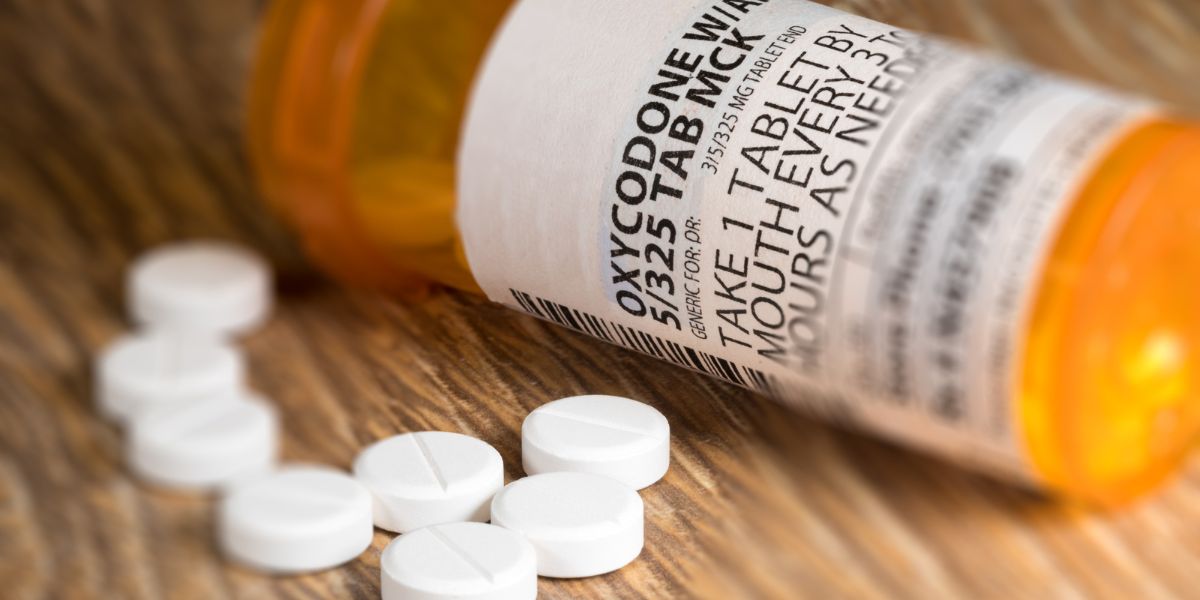Percocet Side Effects and Withdrawal


Percocet, a prescription drug combining oxycodone and acetaminophen, is commonly utilized for managing moderate to intense pain, particularly in cases like persistent pain or cancer-related discomfort. While it effectively alleviates symptoms like fever and chills associated with pain, it’s crucial for patients and caregivers to be aware of the potential side effects and hazards of Percocet.
This includes its physical traits, dosage types, potential adverse reactions, drug interplay, and the risks of extended effects and addiction. Being informed can assist in the secure and efficient use of Percocet, while also recognizing symptoms of dependency and comprehending the appropriate methods for therapy and recuperation.
What Is Percocet?
Percocet, a commercial form of oxycodone, is a prescription opioid pain medication augmented with acetaminophen, a less potent pain killer often found in non-prescription medications. This combination usually results in greater efficacy compared to oxycodone alone in managing pain.
Percocet is FDA-approved for managing intense pain, especially those related to chronic conditions and cancer. Because of its acetaminophen element, Percocet can also assist in alleviating fever-related symptoms, such as tiredness, shivering, and muscular pains.
Endo Pharmaceuticals manufactures Percocet, which is also available under various other brand names, including:
- Xartemix XR
- Xolox
- Magnacet
- Perloxx
- Narvox
- Roxilox
- Tylox
- Pimalev
- Roxicet
- Endocet
What Does Percocet Look Like?
To distinguish between each pill’s dosage, the manufacturer created the pills with different shapes and colors, including:
- 2.5 mg – Oval pill imprinted on one side and 2.5 on the other
- 5 mg – Round pill in color marked on one side and 5 on the other
- 7.5 mg – Oval pill engraved on one side and 7.5/325 on the other
- 10 mg – Capsule imprinted on one side and 10/325 on the other
Percocet Dosages
Percocet is available in several formats, including liquid, concentrated liquid, and extended-release capsules or tablets, with tablets being the most frequently prescribed form.
The dosage and frequency of Percocet may differ depending on the method of administration, the specific dosage, and the patient’s other medications and medical history. It is crucial to inform your healthcare providers about all medications you are taking to prevent potential drug interactions.
For adults, the advised dosage of Percocet is one tablet every six hours as needed for pain management. As it is utilized primarily for comfort and does not address the root medical issues, strict adherence to a six-hour interval is not essential. If the patient does not feel pain or if relief from a previous dose persists, postponing the next dose is permissible.
Percocet Recommended Dosages
The usual prescribed dosages for Percocet are as follows:
- Percocet 2.5 mg, never exceed 12 tablets in 24 hours
- Percocet 5 mg, never exceed 12 tablets in 24 hours
- Percocet 7.5 mg, never exceed 8 tablets in 24 hours
- Percocet 10 mg, never exceed 6 tablets in 24 hours

Copyright: Psiĥedelisto
Credit: Psiĥedelisto
CC0 1.0
Percocet Side Effects
A side effect is any response from a medication that deviates from its intended therapeutic effect. Typically, these are identified during rigorously controlled trial phases. Medical professionals often inform patients about potential side effects to anticipate.
Generally, these effects are adverse and can differ among individuals. Most adverse symptoms may include vomiting, diarrhea, and loss of appetite but typically subside as the body acclimates to the opioid medication over a few days or after treatment. However, if the side effects become excessive or intolerable compared to the medication’s benefits, it is crucial to consult your healthcare provider.
Side effects of Percocet may include a range of symptoms like the following:
- Feeling sick
- Throwing up
- Stomach discomfort
- Difficulty in bowel movements
- Parched mouth
- Perspiration
- Head pains
- Feeling lightheaded
- Sleepiness
- Skin irritation
- Vision impairment
- Delayed responses
Adverse Effects
The terms side effects and adverse effects are commonly used interchangeably, although they represent distinctly different concepts. As outlined earlier, side effects are expected reactions that generally resolve on their own.
Adverse effects can be categorized into two types: those that are predictable but not certain, varying from mild to severe based on dosage, and those that are unpredictable, typically occurring in patients who have allergies to the medication or other predisposing factors.
Regrettably, it is impossible to determine if a patient is intolerant or allergic to a medication if they have never previously taken it or any similar formulation.
It is important to seek immediate medical help if you experience any of the following negative effects from using Percocet:
- Bewilderment
- Disarray
- High body temperature
- Cold sweats
- Abnormal thinking or actions
- Lack of hunger
- Pain in the upper abdomen
- Respiratory issues
- Difficulty in urination
- Blackish urine
- Quivering or shaking
- Alterations in feces color
- Skin rashes or reactions
- Inflammation anywhere on the body
- Jaundice or yellowing of skin or eyes
- Tinnitus or ear ringing
- Abnormal heart rhythm
- Indications of an opioid overdose
- Death
Drug Interactions
It’s essential to disclose to your physician all substances you’re consuming to avoid medication conflicts, encompassing over-the-counter products such as herbal remedies, allergy drugs, and vitamins. Considering that Percocet is commonly recommended for cancer and persistent pain, it’s often utilized by elderly individuals who are more prone to be on other ongoing medications.
Several commonly used medications may potentially cause adverse reactions and side effects when mixed with oxycodone, including:
- Medicines for bacterial diseases
- Therapies for fungal diseases
- Drugs for hypertension and cardiac disorders
- Anti-convulsant drugs
- Diuretics, also known as water pills
- HIV medications
- Hepatitis C treatments
- Other opioids
- Sedatives, such as Valium, Xanax, and Klonopin
- Muscle relaxers
- Antidepressants
- Sleep aids
- Medicines for the common cold and flu
Long-Term Effects of Percocet
The enduring impacts of medication can last for weeks, months, years, or even an entire lifetime. People who consume or misuse medication beyond the recommended period and dosage are more prone to these extended impacts. Although some long-term effects can be reversed with suitable treatment, others require continuous medical monitoring.
Prolonged use of Percocet can lead to various health issues:
- Hearing loss
- Hypoglycemia
- Hyperglycemia
- Muscular pain and weakness
- Red eyes
- Dilated pupils
- Insomnia
- Hypersomnia
- Desolation
- Discomfort
- Irritability
- Hallucinations
- Seizures
- Low blood pressure
- High blood pressure
- Rapid heart rate (100 beats per minute or more)
- Slow heart rate (60 beats per minute or less)
- Brain swelling
- Excess potassium in the blood
- Renal failure
- High acidity in body fluids
- High alkalinity in body fluids
- Persistent indigestion
- Blockage in the intestine
- Paralysis of the intestine
- Liver disease
- Yellowing of the skin and eyes
How Long Does Percocet Stay in Your System?
Percocet stays in the blood for about 12 hours when taken as directed. It is mostly out of the body within 24 hours.
For those who frequently use narcotics or consume them in excessive amounts, the body’s rate of processing and eliminating these substances can differ. Weight, height, and health conditions significantly influence how the body metabolizes narcotics. These physical attributes also affect the body’s overall handling of these substances.
Symptoms of Percocet withdrawal can begin within a few hours of the last dose if it is used frequently. The withdrawal experience varies from person to person, and individuals addicted to the medication often endure a longer and more intense withdrawal phase when they cease usage.

Withdrawal Effects of Percocet
Many individuals who use Percocet become dependent on the drug and may experience a variety of symptoms upon discontinuation. Emergency medical intervention is advised in severe cases, particularly among long-term users. While uncommon, withdrawal symptoms can occasionally be life-threatening.
Users may develop physical, psychological, or both types of dependency on a drug. A professional care team will evaluate this and formulate an appropriate treatment plan. It is essential to consult a doctor before discontinuing any prescribed medication. Generally, it is advised to gradually reduce the dosage of most medications rather than stopping abruptly, often referred to as “going cold turkey.”
Symptoms of Percocet withdrawal may include:
- Perspiration
- Skin bumps
- Nervousness
- Throwing up
- Sleeplessness
- Muscular discomfort
- Migraines
- Stomach cramps
- Agitation
- Loose stools
- Trouble controlling body heat, including heat waves and cold spells
- Despondency
- Thoughts of ending one’s life
- Muscle contractions
- Twitching
- Rapid heartbeat
- Hypertension
- Lack of hunger
- Unconsciousness
- Death
Percocet Addiction
Addiction can develop gradually or suddenly, and it is often difficult to detect in its early stages. It is characterized by abnormal, excessive, compulsive, and persistent non-medical use of any substance despite the problems that arise from self-medicating.
People with a substance use disorder often conceal or rationalize their behaviors to those close to them due to feelings of guilt and shame. Drug-seeking behaviors can manifest in various ways, including:
- Seeking pills, such as asking others to share their medications
- Regularly asking for drugs for numerous wounds
- Consulting various physicians or doctor shopping
- Failing to disclose other prescriptions
- Lying about medical conditions
- Tampering with prescriptions
- Hiding pills
- Stockpiling or storing medication in multiple locations
Certain people might turn to buying or stealing drugs from loved ones or purchasing from drug dealers. Acquiring drugs through channels not approved by the FDA is highly dangerous, as these substances can be contaminated with lethal doses of other compounds.
Percocet Addiction Treatment at White Oak Recovery Center
Addiction is not limited by race, class, or gender and can develop in various ways. It affects not only the person struggling with addiction but also strains personal and professional relationships, potentially causing lifelong repercussions.
The uplifting information is that addiction to Percocet can be treated, and there is potential for recovery. Recognizing the presence of a problem is the crucial first step. Seeking treatment is a brave act and demonstrates a commitment to improving one’s health and life.
The residential treatment program for opioid addiction at White Oak Recovery Center incorporates numerous scientifically supported methods. These include medical detox, medication-assisted treatment, cognitive behavioral therapy, and therapies based on family and group dynamics, among others.
Our compassionate, experienced team at White Oak Recovery Center works closely with each resident to create personalized, holistic treatment plans. These strategies are tailored to meet your personal requirements and foster enduring healing.
Our treatment specialists are enthusiastic to assist you in embarking on the initial step towards an improved life. Contact us now to start your journey to recovery.

Am I covered for addiction treatment?
Your insurance may cover treatment. Call now for an entirely free and confidential assessment. Recovery starts with a phone call.

- “Prescription Opioid DrugFacts.” National Institute on Drug Abuse, Jun. 2021.
- “Oxycodone.” University of Michigan Health, Jan. 2021.
- Sadiq, Nazia M. “Oxycodone.” StatPearls, Feb. 2024.
- “Oxycodone.” MedlinePlus: National Library of Medicine (US), Mar. 2024.
- Moradi, Mohammad, et al., “Use of Oxycodone in Pain Management.” Anesthesiology and Pain Medicine.
Medical Disclaimer:







